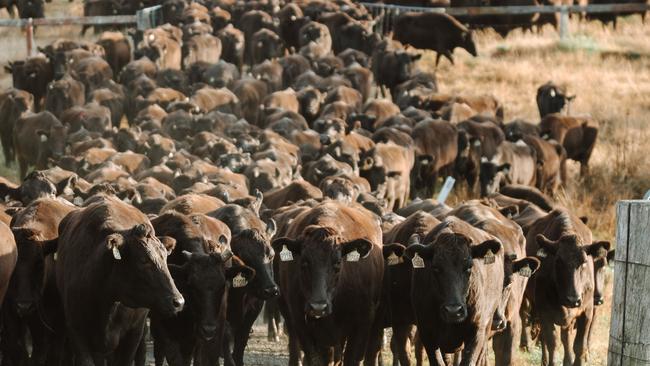A boom in 2022 was followed by a fast fall from grace. See where prices are now
Feedlot buyers have started to offer better money for Wagyu-cross steers, but the rebuild is slow after a big shock to the sector last year.
A leading Wagyu consultant says the Australian beef industry has hit the “bottom of the cycle: and was “starting to rise”.
Data from AuctionsPlus shows Wagyu prices have started to claw back some ground after a severe slump.
This comes as commercial F1 Wagyu breeders have found the going tough over the past financial year as feedlot and backgrounding buyers hesitated to take on Wagyus after the major downturn, which hit the entire sector, the year before.
In 2022, feeder Wagyu steers sold for an average price of $3400, according to AuctionsPlus data, and up to $5000 according to breeders.
With feedlots investing up to a further $2000 in feed before selling; the costs became too high, resulting in prices more than halving around this time last year.
At the moment, commercial F1 breeders say feedlots are offering around 450c/kg (which would work out at around $2200 for steers around 500kg) and heifers are now around 30-40c/kg off that.
Feedlots had around 360c/kg on the table at the end of last year and a measly 200c last spring for steers and 140c/kg for heifers.

The highest producers were offered was around 1080c/kg, back in 2022.
One producer told The Weekly Times the current rates were profitable, but that feedlot buyers were very particular over genetics and marbling.
His steers go onto feed for about 320 days.
Since that downturn, feedlots have demanded more from the genetics of Wagyus they put on feed, demanding top genetics with guaranteed marbling scores to ensure they got a return on their investment.
While full-blood Wagyu feeder steers held on better than F1s consultant Harvey Weyman-Jones contends that the Wagyu feeders continue to retain their 50-80 per cent premium.
“Full blood steers are still trading within that (premium) range,” Mr Weyman-Jones said, while F1 Wagyus had been more variable.
“At one stage the F1s were at the same price as straight Angus, yes, but that is marginally improving now,” he said.
Mr Weyman-Jones said feedlots were pushing for cattle with genetic strength in marbling from bulls with Estimated Breeding Values of marble score 2 or higher to guarantee the investment.
“They want to be confident that if they feed them, they will achieve the result,” he said.
“In the past 10 years that F1 market has had its ups and downs and people come in and out of it,” he said.
“Five to 10 years ago people would buy any old Wagyu bull but they have found out that any old bull is not the way to go, it is all more refined now.
“The feedlots need to know whether the money will be at the other end and that is why the best Wagyu bulls are being used and not just any old Wagyu bull.”
Results of a Wagyu eating quality study published by Meat and Livestock Australia last year revealed showed that simply using a Wagyu bull over Angus cows did not automatically improve eating quality, and that results were inconsistent.
Data provided by AuctionsPlus (see graphic below) show the average price trends for Wagyus over the past five years featured a peak in 2022 and high clearances on the online selling platform.
Prices collapsed, and clearances fell away sharply in 2023. Returns have now rebuilt to around 2020 levels, but clearances for stock offered on the platform continue to sit below five year averages, particularly for breeding stock and heifers.
Compared to a five year average clearance rate for all Wagyu breeding stock offered on AuctionsPlus of 47 per cent, the past two quarters have shown clearance rates of 23 per cent in quarter one of this financial year, and 43 per cent in quarter two.
AuctionsPlus will host a special premium multi-vendor Wagyu genetic sale today (wed) with 100 lots offered including bulls, females, semen and embryos.
The Wagyu breed was now “absolutely” committed to performance recording and use of DNA testing, Mr Weyman-Jones said. Most seedstock producers extensively DNA tested their herds now, he said, instead of relying on mid-parent averaged data.
Meanwhile, co-selling agent with Elders Andrew Meara said while confidence was lacking “right the way through the industry” given prices in the past couple of years and the fact that “we’re in the depths of winter now, so it is the hardest time of year, these good genetics are always well sought after”.






